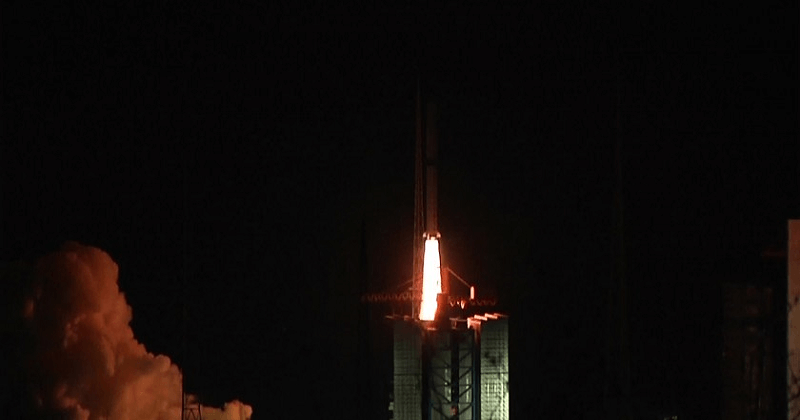
China launched a relay satellite early today, successfully, to set up a communication link between the Earth and a planned Chinese lunar exploration mission to explore the Moon’s mysterious far side. Named Queqiao (Magpie Bridge), the 400-kg satellite, has a designed life of three years.
It was carried by a Long March-4C rocket that blasted off at 5.28am(local time) from southwest China’s Xichang Satellite Launch Center, the China National Space Administration (CNSA) said.
“The launch is a key step for China to realise its goal of being the first country to send a probe to soft-land on and rove the far side of the Moon,” said Zhang Lihua, manager of the relay satellite project.
About 25 minutes after lift-off, the satellite separated from the rocket and entered an Earth-Moon transfer orbit with the perigee at 200 kms and the apogee at about 400,000 kms. The solar panels and the communication antennas were unfolded.
Queqiao is anticipated to enter a halo orbit around the second Lagrangian (L2) point of the Earth-Moon system, about 455,000 km from the Earth. It will be the world’s first communication satellite operating in that orbit.
The satellite carries several antennas. One, shaped like an umbrella with a diameter of five meters, is the largest communication antenna ever used in deep space exploration, said Chen Lan, deputy chief engineer of the Xi’an Branch of the China Academy of Space Technology (CAST).
Read More: Kumaraswamy Says He Didn’t Want to Become CM through Political Moves
The satellite could stay in the halo orbit around the L2 point of the Earth-Moon system for a long time by using relatively little fuel, thanks to the gravitational equilibrium at that point.
Chinese scientists and engineers hope the Queqiao satellite will form a communication bridge between controllers on the Earth and the far side of the Moon where the Chang’e-4 lunar probe is expected to touch down later this year. Today’s launch was the 275th mission of the Long March rocket series.
“We designed an orbit around the Earth-Moon L2 point where the relay satellite will be able to ‘see’ both the Earth and the far side of the Moon,” Bao Weimin, director of the Science and Technology Commission of the China Aerospace Science and Technology Corporation said.

Post Your Comments